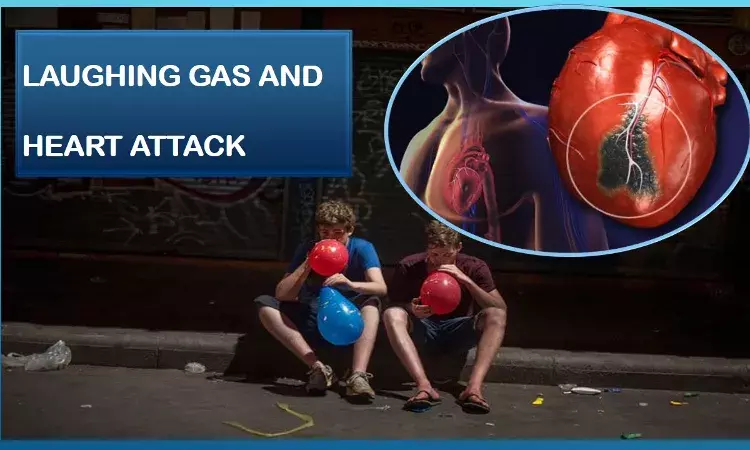- Home
- Medical news & Guidelines
- Anesthesiology
- Cardiology and CTVS
- Critical Care
- Dentistry
- Dermatology
- Diabetes and Endocrinology
- ENT
- Gastroenterology
- Medicine
- Nephrology
- Neurology
- Obstretics-Gynaecology
- Oncology
- Ophthalmology
- Orthopaedics
- Pediatrics-Neonatology
- Psychiatry
- Pulmonology
- Radiology
- Surgery
- Urology
- Laboratory Medicine
- Diet
- Nursing
- Paramedical
- Physiotherapy
- Health news
- Fact Check
- Bone Health Fact Check
- Brain Health Fact Check
- Cancer Related Fact Check
- Child Care Fact Check
- Dental and oral health fact check
- Diabetes and metabolic health fact check
- Diet and Nutrition Fact Check
- Eye and ENT Care Fact Check
- Fitness fact check
- Gut health fact check
- Heart health fact check
- Kidney health fact check
- Medical education fact check
- Men's health fact check
- Respiratory fact check
- Skin and hair care fact check
- Vaccine and Immunization fact check
- Women's health fact check
- AYUSH
- State News
- Andaman and Nicobar Islands
- Andhra Pradesh
- Arunachal Pradesh
- Assam
- Bihar
- Chandigarh
- Chattisgarh
- Dadra and Nagar Haveli
- Daman and Diu
- Delhi
- Goa
- Gujarat
- Haryana
- Himachal Pradesh
- Jammu & Kashmir
- Jharkhand
- Karnataka
- Kerala
- Ladakh
- Lakshadweep
- Madhya Pradesh
- Maharashtra
- Manipur
- Meghalaya
- Mizoram
- Nagaland
- Odisha
- Puducherry
- Punjab
- Rajasthan
- Sikkim
- Tamil Nadu
- Telangana
- Tripura
- Uttar Pradesh
- Uttrakhand
- West Bengal
- Medical Education
- Industry
"No more an innocent laugh": EHJ reports MI following nitrous oxide abuse.

Nitrous oxide (N2O, laughing gas) is increasingly used as a recreational drug and is presumed relatively safe and innocent. It is often being used in combination with other substances, such as cannabis. A recently published report in European Heart Journal highlights a case of acute myocardial infarction (MI) secondary to very high-dose nitrous oxide abuse in combination with cannabis and possible hypoxia. This is the first such case report in the literature that incriminates this rather "innocent" recreational drug in the causation of MI.
Ever since, it has been used for various purposes ranging from medical use because of its analgesic properties, to its application as a mixing and foaming agent in the food industry, and finally for recreational use due to its hallucinogenic, euphoric, and relaxant properties. This led to the introduction of the term laughing gas. There has been a recent surge in the recreational appreciation of N2O, also known as 'Hippy Crack', its use equalling the use of ecstasy, cocaine, and ketamine. The increase of its use is likely to be related to its wide availability, rapid action, short duration, and presumed innocence.
Yet, it leads to accumulation of serum homocysteine which is known to be prothrombotic and to impair fibrinolysis. N2O is often used in combination with other drugs, such as cannabis, which is known for its vasospastic properties, increasing the risks for cardiovascular events.
A young adult attended the emergency room because of chest pain after recreational use of very high-dose nitrous oxide in combination with cannabis. Electrocardiography demonstrated ST-elevation in the anterior leads. Coronary angiography showed thrombus in the proximal and thrombotic occlusion of the distal left anterior descending coronary artery for which primary percutaneous coronary intervention was attempted.
Thrombus aspiration was unsuccessful and the patient was further treated with a glycoprotein IIb/IIIa in addition to dual platelet therapy. Blood results showed low vitamin B12 and folic acid status with concomitant hyperhomocysteinaemia, a known cause of hypercoagulation. Transthoracic echocardiogram showed a moderately reduced left ventricular ejection fraction (LVEF). Three months later, an improvement in LVEF and no recurrent angina or symptoms of heart failure were noticed.
N2O has been shown to interfere with the methionine and folate cycles by directly inhibiting methionine synthase due to irreversible inactivation of its co-enzyme vitamin B12, with consequent increase of homocysteine. No MTHFR-mutation was found and folic acid status was only slightly reduced, therefore N2O seems the most plausible explanation for the low B12 and high serum homocysteine levels.
Data from the Multi‐ethnic Study of Atherosclerosis (MESA) cohort recently showed that high homocysteine levels are associated with increased incidence and progression of coronary artery calcium score. Moreover, elevated plasma homocysteine levels were shown to induce dysfibrinogenaemia and the formation of clots that are abnormally resistant to fibrinolysis.
Severe hyperhomocysteinaemia secondary to nitrous oxide-induced vitamin B12 deficiency together with the vasoconstrictive effects of cannabis might pose a seriously increased risk for intracoronary, among others, thrombus formation. Due to this, chronic recreational use of N2O might pose a serious risk for ischaemic vascular events. Notably, in combination with other risks factors, like cannabis, it may have lead to large MI due to a thrombus in the proximal and distal LAD in an otherwise healthy young adult.
Source: EHJ case reports:https://doi.org/10.1093/ehjcr/ytaa557
MBBS, MD , DM Cardiology
Dr Abhimanyu Uppal completed his M. B. B. S and M. D. in internal medicine from the SMS Medical College in Jaipur. He got selected for D. M. Cardiology course in the prestigious G. B. Pant Institute, New Delhi in 2017. After completing his D. M. Degree he continues to work as Post DM senior resident in G. B. pant hospital. He is actively involved in various research activities of the department and has assisted and performed a multitude of cardiac procedures under the guidance of esteemed faculty of this Institute. He can be contacted at editorial@medicaldialogues.in.
Dr Kamal Kant Kohli-MBBS, DTCD- a chest specialist with more than 30 years of practice and a flair for writing clinical articles, Dr Kamal Kant Kohli joined Medical Dialogues as a Chief Editor of Medical News. Besides writing articles, as an editor, he proofreads and verifies all the medical content published on Medical Dialogues including those coming from journals, studies,medical conferences,guidelines etc. Email: drkohli@medicaldialogues.in. Contact no. 011-43720751


